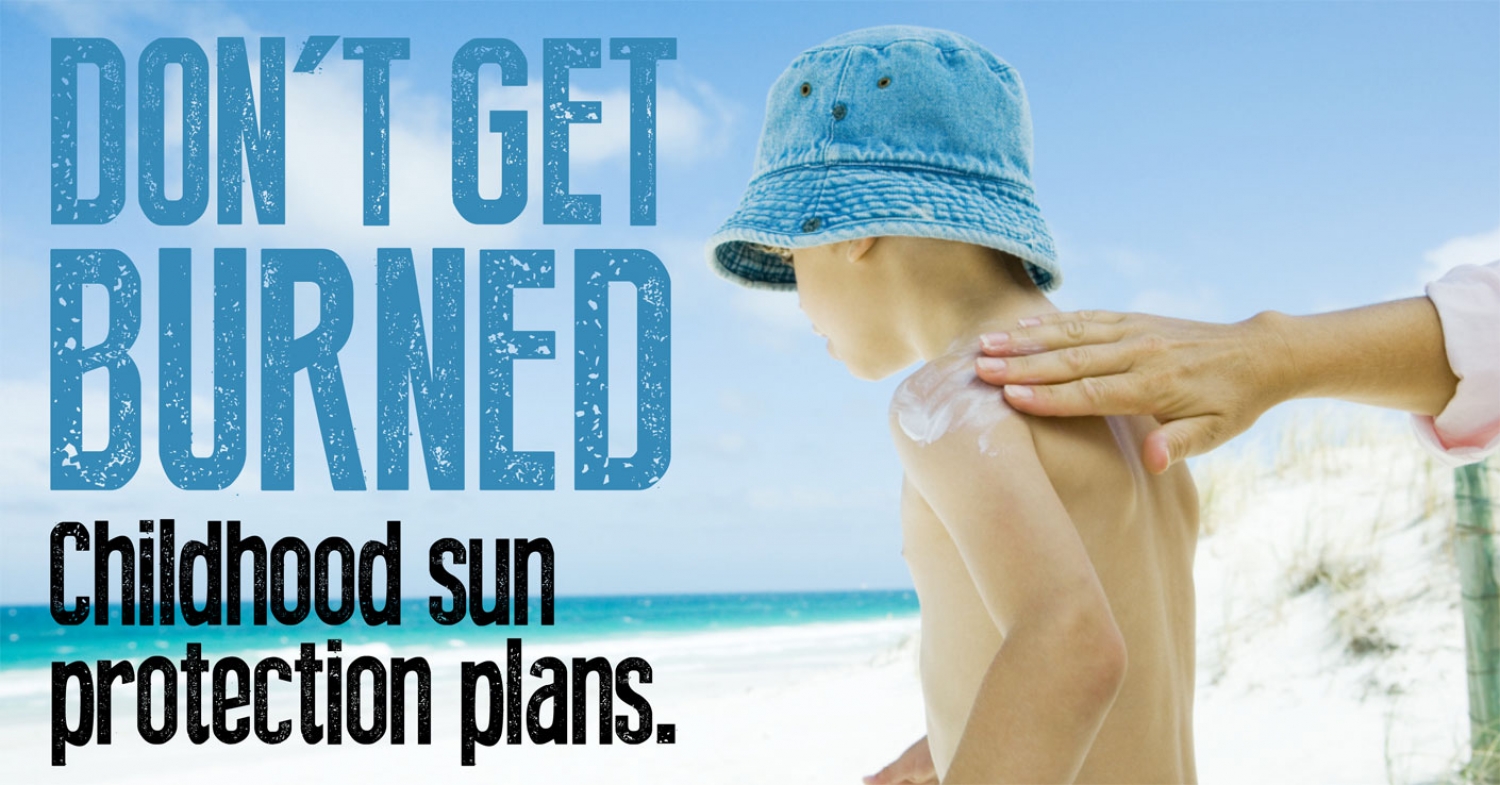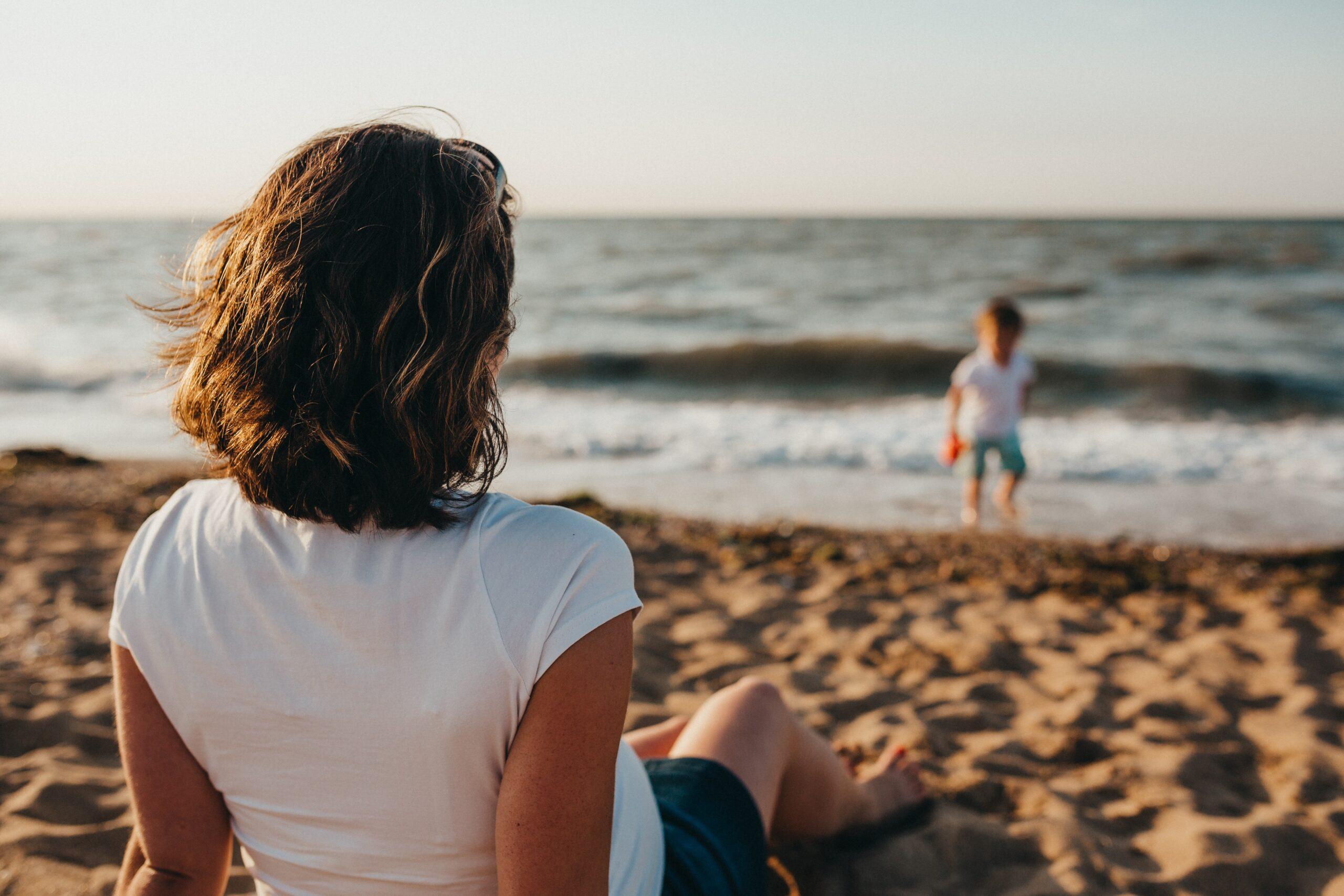Summer is filled with fun outdoor activities. But these pastimes can cost your little one’s skin. In fact, it only takes one blistering sunburn from unprotected sun exposure as a child to possibly double the risk of melanoma later in life, according to The Skin Cancer Foundation.
While the sun is to blame for more than 90 percent of all skin cancers, more than two-thirds of us, young and old, don’t use sun protection regularly. However, by following a few practical tips and stressing the importance of proper skin care early on, you can help protect your children from the sun’s damaging rays not only during the warmest months, but also year-round. Be mindful of the following tips to keep your family’s skin safe in sunlight.
Protect your children’s skin early.
For babies, if avoiding direct sun exposure isn’t possible, The American Academy of Pediatrics (AAP) recommends protecting infants with a broad-spectrum sunscreen that offers both UVA and UVB protection, and has at least SPF 15. UVA rays (the “aging rays”) penetrate deep into the skin to cause wrinkling, spotting and skin cancer. UVB rays (the “burning rays”) sizzle the top layer of the skin, also increasing the risk of skin cancer. If used correctly, sunscreen can help protect against sunburns and certain skin cancers. But it should not be used as a reason to stay in the sun longer.
Choose physical protection, not chemical.
Because a young child’s skin is sensitive, use a physical sunscreen that contains zinc oxide and titanium dioxide. These pure physical block ingredients provide the safest protection with the least potential for skin irritation. A physical sunscreen deflects, rather than absorbs, UV rays, and starts working the moment it is applied. By contrast, chemical blocks may be more irritating and can take up to 20 minutes to activate. This increases the risk of sunburn if not applied well before heading outside.
Use the right amount.
As a rule of thumb, use one ounce of sunscreen (the size of a shot glass, or a palm full) per application on children. For an adolescent or adult, use one-and-a-half ounces. MD Moms’ Baby Silk Babysafe Sunscreen Towelettes contain a pre-measured dose of SPF 30+ physical sunscreen to properly cover the average 2 year old from head to toe. If using chemical sunscreen, apply it to your child’s face and body, wait 20 minutes, and then reapply to catch any missed spots. Apply coverage twice to areas of the skin that sweat or rub against clothing. Test for reactions to any new topical product by first applying a tiny amount to a patch of skin on the extremities or torso. Wash off the product and discontinue use if you or your child experiences redness, itching or irritation.
Apply regularly.
When dry, reapply sunscreen every three to four hours. If swimming, wet or sweaty, use sunscreen at one- to two-hour intervals. Consistent sunscreen use is most important when around water, sand and snow. These elements reflect the sun’s rays and increase the risk of sunburn.
Check the date.
Read expiration dates on skincare products and dispose of sunscreen once the date has passed. Typically, if your sunscreen is more than two seasons old, it has lost its potency. If the date is in question or not listed, call the company or purchase a new bottle.
Seek shade.
Avoid direct sun exposure from 10am to 4pm. The most damaging UV radiation occurs during these peak hours of the day. If outdoors, find a shady area where your children can play, while you properly apply and reapply sunscreen during this time.
Dress for the sun.
Put your child in clothes with UV protection, such as Cabana Life sun protective clothing. Alternatively, an SPF rinse on tightly woven cotton clothing can raise the SPF value from 5 (the SPF value of an average T-shirt) to SPF 30. Shade your child’s face and ears with a wide-brimmed hat that spans at least 2.5 inches for protection. Further protect your children’s eyes with sunglasses that block 99-100 percent of UV rays and check for ANSI-rated UVA and UVB protection.
Lead by example.
If your children see you wearing sunscreen and protective clothing, they’ll be more likely to accept the importance of sun protection. And remember: It’s better late than never when it comes to protecting your skin too.
By encouraging and practicing sun safety, you help your children enjoy the summer sun the healthy way. You can also rest easy knowing you’ve taken the preventative measures to start protecting your children’s skin long-term.





